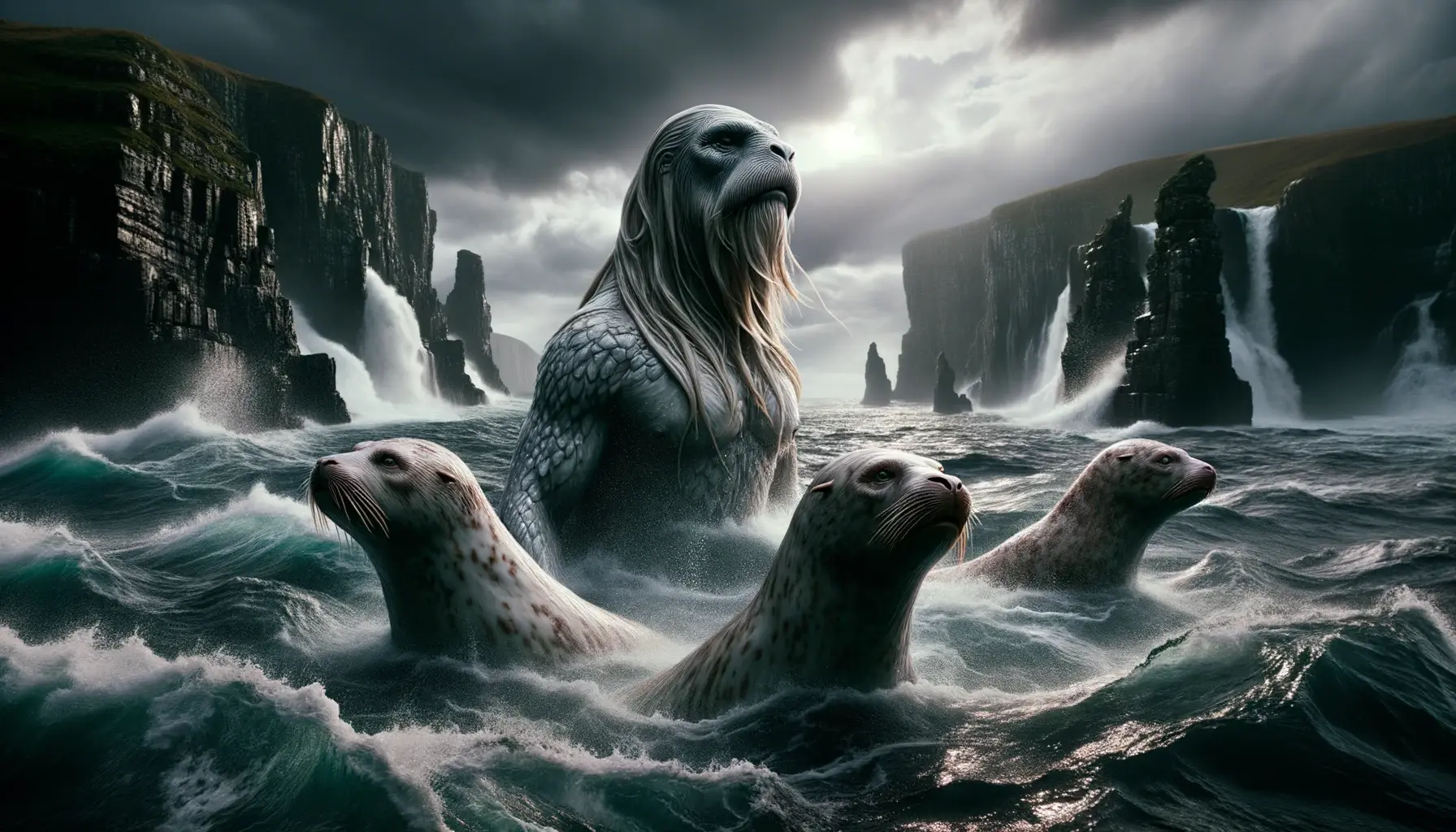Origins of Selkie Legends
Scottish Origin
These legends have their roots in the folklore of Scotland, where they are known as “selchies.” The Scottish tales tell of seals that can shed their skin to become human. Often, a human falls in love with one of them and hides their skin to prevent them from returning to the sea. Trapped on land, the selkie must marry the human to regain their freedom.
These stories are thought to have originated from the ancient Celtic belief in shape-shifting and the close relationship between humans and the natural world. They are also influenced by Norse mythology, introduced to Scotland during the Viking Age.
Irish Origin
These legends also have roots in Irish folklore, where they are known as “roane.” The Irish stories speak of seals that can transform into humans and are especially common in the waters around the Aran Islands.
The Irish stories are thought to have been influenced by early Scottish settlers and shipwrecked Spaniards who married dark-haired, fur-wearing Finnish and Saami native women. These women were thought to be selkies due to their use of sealskin coats and kayaks.
Icelandic Origin
Similar legends are present in Icelandic folklore, where they are known as “selshamur.” Icelandic tales tell of seals that can shed their skin to become human, particularly common in the Westfjords region.
The Icelandic stories are influenced by Norse mythology and the close relationship between humans and nature. The Icelandic sagas, written in the 13th century, contain references to them and their ability to transform from seals to humans.
Characteristics
Physical Appearance
They are mythical beings that can shift between seal and human forms by shedding or donning their seal skin. In their human form, male ones are described as handsome and strong, while females are known for their beauty. Both genders have webbed hands and feet, and their eyes are often dark and soulful.
In seal form, they appear like regular seals, though often larger and more majestic. They have a distinctive cry that’s almost human-like.
Behavior and Traits
Being creatures of the sea, they are most at ease in the water. They can hold their breath for extended periods and swim with remarkable speed and agility. On land, they shed their seal skin to assume human form.
Male ones are charming and charismatic, often irresistible to women. Females, however, are known for their beauty and grace. According to myth, a female one must shed seven tears into the sea to revert to her true form.
These creatures are often linked with fallen angels, mermaids, sirens, and swan maidens in various mythologies. They are deemed magical, capable of shape-shifting and controlling the elements. In some tales, they can control the weather and tides.

Folklore and Tales
Romantic Tragedies
Stories often revolve around the relationships between humans and them. These tales typically involve a human stealing the creature’s skin, forcing them to remain human and marry them. The trapped creature longs to return to their oceanic home and can often do so by finding their skin.
Vengeful Ones
However, not all tales portray them as romantic figures. Some depict them as dangerous and vengeful. In such stories, a human has angered one by stealing their skin or mistreating them. Seeking revenge, they bring misfortune or harm to the human and their family.
Interactions with Fishermen
Tales also frequently involve fishermen. In these stories, a fisherman discovers one on the beach or at sea. The fisherman may either hide their skin to force a relationship or set them free. These tales often have sad endings, with the creature returning to the sea, leaving the human desolate.
In Popular Culture
In Art
They have inspired many forms of art, including paintings, sculptures, and illustrations. Many artists are captivated by their ability to transform, their beauty, and melancholic nature. They are often portrayed as graceful beings, with their seal skins nearby.
One renowned representation in art is “The Selkie Wife” by Scottish artist John Duncan. The artwork captures the melancholy and longing often associated with these creatures.
In Film
They have graced various films, usually as romantic or tragic figures. One example is the 1994 film “The Secret of Roan Inish.” Another is the 2009 Irish film “Ondine.”
In Music
They’ve inspired many musicians and songwriters. One example is “The Selkie” by Lisa Hannigan. Another is “The Selkie Bride” by The Corries.
In Real World Locations
Of Orkney
Orkney, off the northeastern coast of Scotland, has a rich history of their folklore. They would shed their seal skins to join islanders.
Of Faroe Islands
The Faroe Islands, between Iceland and Norway, has a deep-rooted tradition as well. Here, they’re called “kópakonur” or “seal women.”
Of Shetland
Shetland, off the northeastern coast of Scotland, is another place with a rich tradition. Here, they’re called “selchies.”
Frequently Asked Questions
What is the myth in Scotland?
In both Irish and Scottish folklore, they live as seals in the sea but can become human on land.
Difference between a mermaid and them?
Mermaids are always half-human and half-fish, while they are seals in the water and humans on land.
Are they Scottish or Irish?
Mainly associated with the Northern Isles of Scotland, they also exist in Irish folklore.
What is an Irish one?
An Irish one is a marine legend, similar to a mermaid concept in Ireland.
What are their powers?
They can be both friendly and vengeful. They’re said to control the sea, weather, and have healing powers.
What is the story of the pelt?
The story tells of a man who steals a female’s skin, forcing her to marry him. She eventually finds her skin and returns to the sea.
If you want to learn more about Selkies, check out this great video below:

